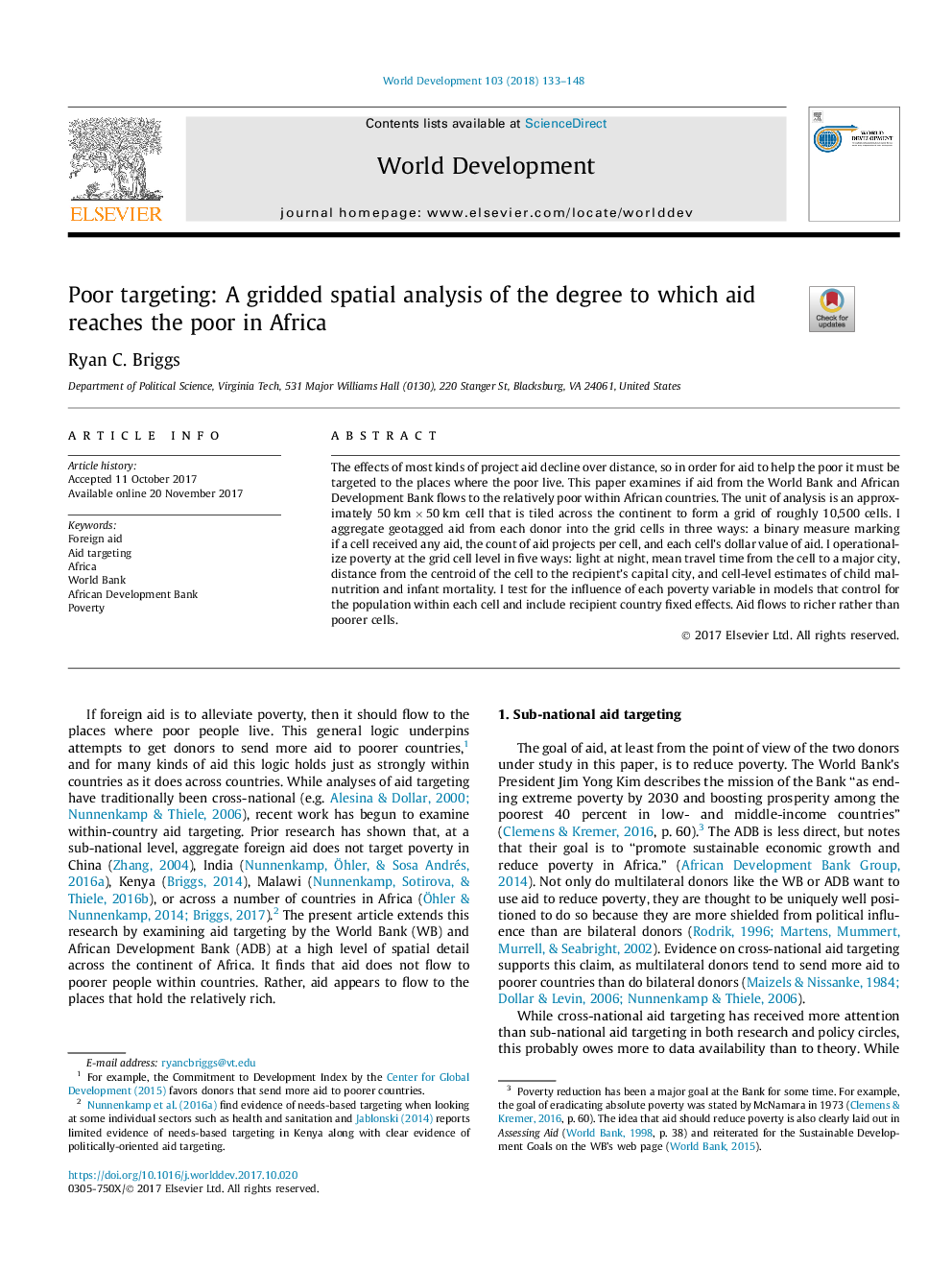| Article ID | Journal | Published Year | Pages | File Type |
|---|---|---|---|---|
| 7392240 | World Development | 2018 | 16 Pages |
Abstract
The effects of most kinds of project aid decline over distance, so in order for aid to help the poor it must be targeted to the places where the poor live. This paper examines if aid from the World Bank and African Development Bank flows to the relatively poor within African countries. The unit of analysis is an approximately 50â¯kmâ¯Ãâ¯50â¯km cell that is tiled across the continent to form a grid of roughly 10,500 cells. I aggregate geotagged aid from each donor into the grid cells in three ways: a binary measure marking if a cell received any aid, the count of aid projects per cell, and each cell's dollar value of aid. I operationalize poverty at the grid cell level in five ways: light at night, mean travel time from the cell to a major city, distance from the centroid of the cell to the recipient's capital city, and cell-level estimates of child malnutrition and infant mortality. I test for the influence of each poverty variable in models that control for the population within each cell and include recipient country fixed effects. Aid flows to richer rather than poorer cells.
Related Topics
Social Sciences and Humanities
Economics, Econometrics and Finance
Economics and Econometrics
Authors
Ryan C. Briggs,
